Science Hack Day Berlin 2016 – The Hacks
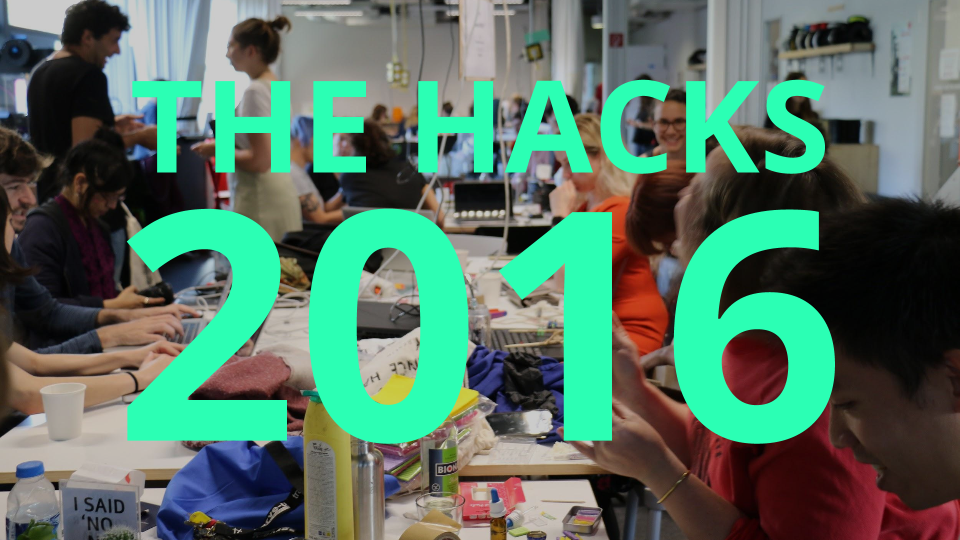
More evidence in support of the intergalactic hacknomenon, Science Hack Day Berlin 2016. Documentation collected from our hackathon etherpad plus other sources. If you were there, experienced it for yourself, and have more proof to share, comment below or send it over to shd@opentechschool.org. THANK YOUUUU!
- Evolution Simulation
- Powerwalking Power
- total recall nails HONORABLE MENTION
- augmented cooking bot BEST DATA HACK
- humans sound like apes AUDIENCE FAVOURITE & BEST DESIGN HACK
- Rock your Rainbow – Spectrometer
- infection reduction game
- battery plant-pots MOST SUSTAINABLE HACK
- quantum reality / virtual reality HARDEST HACK
- passive radar BEST HARDWARE BACK & BEST SCIENCE HACK
- arduino based wearables BEST HEALTH HACK
- SHD Emission Tracker
- Les Joies de la Photographie BEST ART/SCIENCE HACK
- underwater robot
- glowing women / lets talk about periods
1. Evolution Simulation
Team: Morris, Stefan
A simulation of a world with creatures. The world is a 2D screen. A creature is a polygon.
All edges of a polygon have equal length. Polygons can be born into the world. Gaps between Polygons could be new Mutations of formerly unknown Polygons.
“Natural” Selection is defined by rules. Polygons can not overlap. Only vertices and edges can overlap. Polygons with more neighbors are healthier than polygons with only a few neighbors. Vertices with a small angle sum are not as healty as 360° Vertices. Polygons with only the same neighbors are not as healthy as polygons with many different neighbors. Polygons can be convex or concave. The edges of a polygon do not overlap. Only adjacent Edges overlap at one Vertex. All vertices of polygons have different positions. Vertices of one polygon can only lie at the end of exactly two edges.
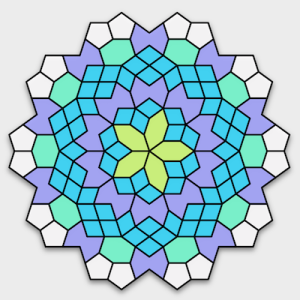
2. Powerwalking Power: creates energy from walking
Team: Doro, Marja, Joram, Manuel
We want to gather excess energy from walking or running. We constructed three different linear alternators that all move a magnet through a tightly wound copper coil. A LED is powered by the linear alternator and flashes up when shaking the device. When attached to a runner the LEDs light up with every step. The design is simple, and the parts can be salvaged from other devices. The tubes in one of the hacks are made from rolled up paper and the end caps are made from wood. Another tube was salvaged from an old electrical installation tube. The coils were wound by attaching the tube to a battery powered drill and slowly rolling up the copper wire. Total cost of one build is somewhere between 5 and 10 EUR for the copper wire and the magnet. Reclaim the wire from an old coil will reduce the costs even further.
With some further iteration we believe that it could be possible to charge a battery while running, effectively providing an off-grid sustainable power source for small scale applications.
This little hack is great to build your own running light at low cost by reclaiming materials you might already find on your fridge (magnets) or in an old printer (coils). The key for an efficient system is a strong magnet and a narrow but tightly wound coil with as many turns as possible.
LINKS: www.ohyouhere.de/SHDB16<
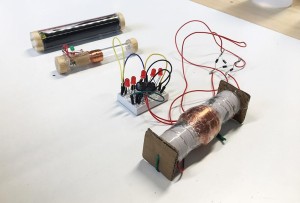
3. Total Recall Nails HONORABLE MENTION
Team: DARSHA HEWITT, DENNY PHANE, NADJA BUTTENDORF
Let’s make fiction science again! In the Sci-fi movie ‘Total Recall’ from 1990 the secretary changes the color of her fingernails by tipping on her nails.OMG!
We experiment with an universal indicator paper, a ph-indicator to test materials for acidity, you can buy in every pharmacy. The colours from yellow to red (1-6) indicate an acidic solution, colours light blue to dark blue indicate bases (9-11) and green colour indicates that a solution is neutral. With a superalkaline solution we changed the color of the paper from yellow to blue. We found a way to RECALL the previous yellow color by dropping some superacidic solution on the paper.
No LED’s involved!
- cut the litmuspaper in the shape of your fingernail
- stick it to double sided tape and cut the tape.
- move the protection layer of the tape and stick it on your fingernail.
- drop some superalkaline solution on your fingernail.
- wohooo your fingernail is changing color!
- now trip the most acidic solution you can find in your household (e.g. vinegar) on your fingernail!
- your fingernail is turning yellow again!
We also invented the PISS NAILS!
A very healthy tool to test the pH of your urin and check if your hyperacidity.
LINKS: http://nadjas-nail-art-residency.org/darsha-hewitt-total-recall-nails/
some videos:
4. Augmented cooking bot BEST DATA HACK
Team: Arne Jenssen, Sascha Held, Georg Buchner, Markus Scheider, Tim Baeumlisberger, Moritz Ebeling-Rump
The augmented cooking bot attempts to solve the problem of overcooking and undercooking of food. We use temperature sensors and feed that into an algorithm that tells you when to flip the pancake and when it is done and it also manipulates the temperature of the oven by turning it on/off.
We have done a lot of experiments with
— open source Perfect pancake —
59 grams
236 °C
1m 20s flip
1m 40s second side
Recipe: “eigen pancake” [1]
190 g flour
25g sugar
10 g baking powder
3 g salt
25 g butter
330 g milk
80 g eggs
[1] “Cooking with Geeks” – Jeff Potter – Oreiiley 2013

5. Humans sound like apes AUDIENCE FAVOURITE & BEST DESIGN HACK
Team:
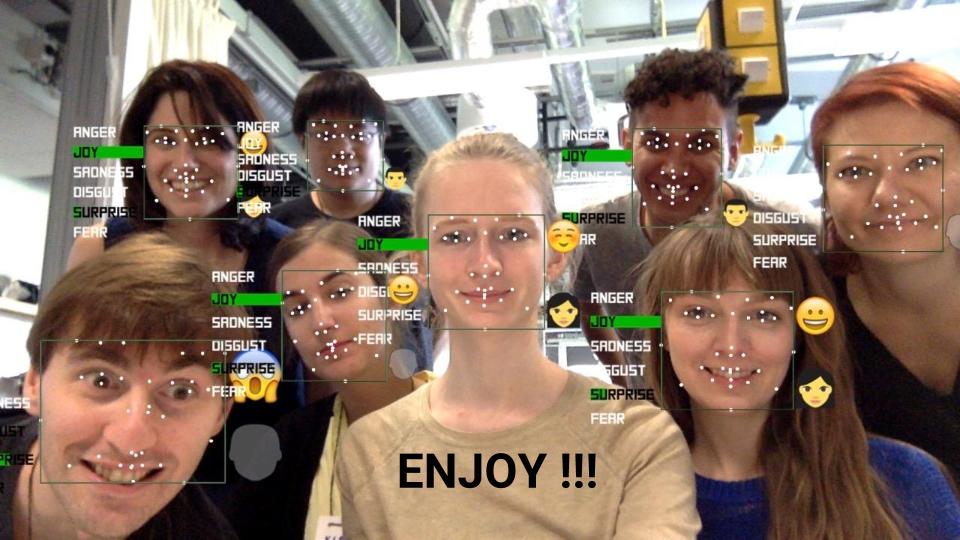
6. Rock your Rainbow – Spectrometer
Team: Alessandro Volpato, Mario Behling, Hong Phuc Dang, Matthias Schwer, Alexander Moellers, , Richard Ho, Stephanie Albrecht, Patrick Hasenfeld, Iris Wessolowski, Bjoern Huwe, Ellie Mutchler
The goal of Rock your Rainbow is to build a general purpouse, cheap and open source spectrometer. Moreover we will launch citizen science activities for environmental and food analysis.
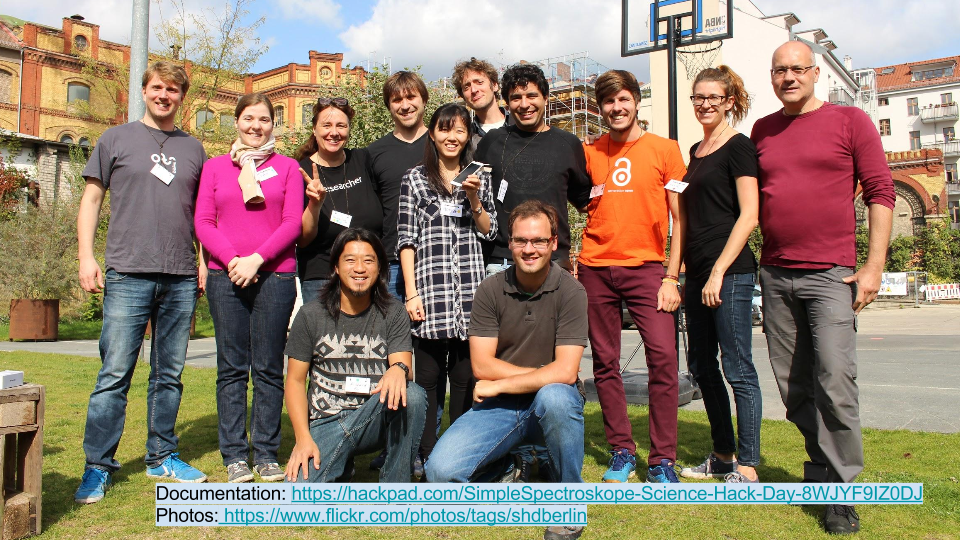
7. Infection n Game
Team: Hélène Trommelen, Gene Kogan
8. Battery plant-pots MOST SUSTAINABLE HACK
Team: Gal Schkolnik (@GSchkolnik), Alessandro De Simone,Richard Höchenberger (@RHoechenberger)
Some bacteria, found in mud from your local lake, can produce electricity, by eating sugars or organic acids, and anaerobically donating their terminal metabolic electrons to an electrode exposed to air. In simpler terms, if we physically separate these bacteria from the air, but connect them to it via a pice of wire with resistance, we’ll get voltage and current, i.e. electrical power. The plant added to the system will supply the sugars via its roots.
- https://goo.gl/LkNgDP
- http://buildinprogress.media.mit.edu/projects/4289/steps
- https://twitter.com/SHD_Berlin/status/779669324021784576
- https://twitter.com/GSchkolnik/status/780002613219778560
- https://twitter.com/RHoechenberger/status/779989673728933888
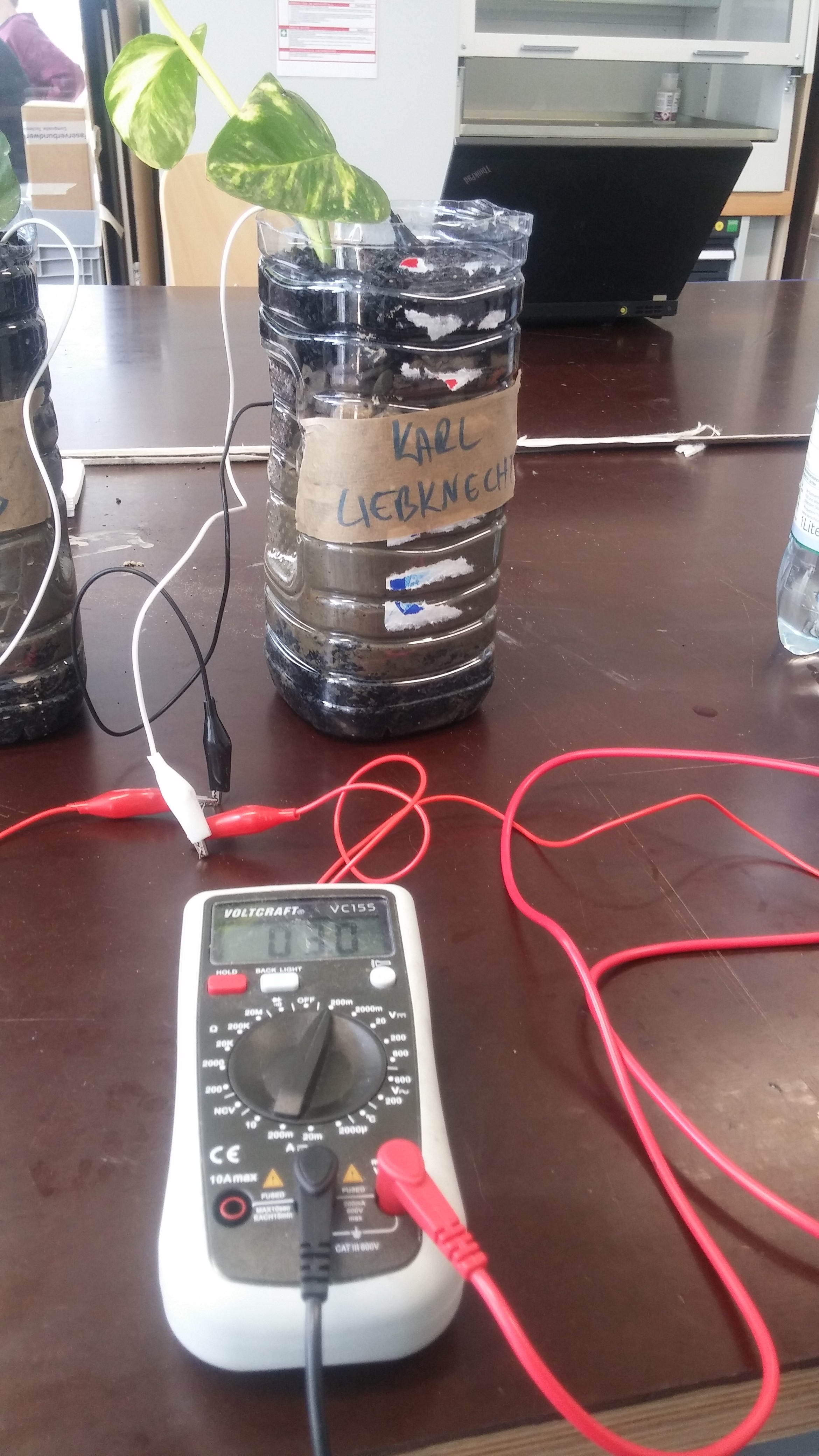
9. Quantum reality / Virtual reality HARDEST HACK
Team: Benjamin Skirlo, Giulia paparo, Johanna Jaskowska, Philip Silva, Thomas Heidtmann
Experience Quantum Physics through Virtual Reality. One doesn’t directly see quantum mechanic effects but using VR it’s now possible! We visualize the electron probability density and thus the possible states in the hydrogen atom through funny objects. The idea is that an observer would then trigger that a certain state is chosen.
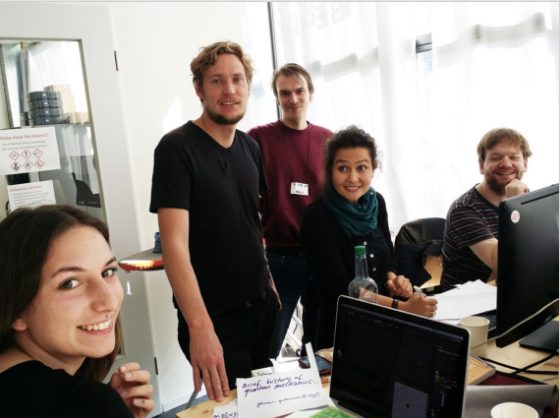
10. Passive radar BEST HARDWARE BACK & BEST SCIENCE HACK
We scrapped together a passive radar collection system using 2 TV tuners with anntenae, a USB hub, and some custom software. The amount of data that these tuners collected proved to be much more than we could process as mere mortals, but we did make a valient attempt to implement a custom cross correlation function to deduce the dopplar shift and distance of radar contacts, before eventually settling on using some built-in octave methods. We were also able to produce a proof of concept for transmitting finished radar matrix vertices to Unity binary via socket. More information about the tools that were used and source code and be found in our github repository, linked below.
11. VIT BAND: Arduino based wearables BEST HEALTH HACK
We created an expandable and hackable arduino wearable with a wide variety of sensors.
The device includes:
Pulsesensor
UV lightsensor
Visiblelight sensor
Ambienttemperature
Humidity
Accelerometer
All this in a compact and batterypowered form.
The best part: You can programit yourself, create events based on context, interact with the environment andcharge it with your phone power supply.
LINKS :
TheDevice: https://enhance.dyndns.org/index.php/s/8Da7caGXMjwWSVn
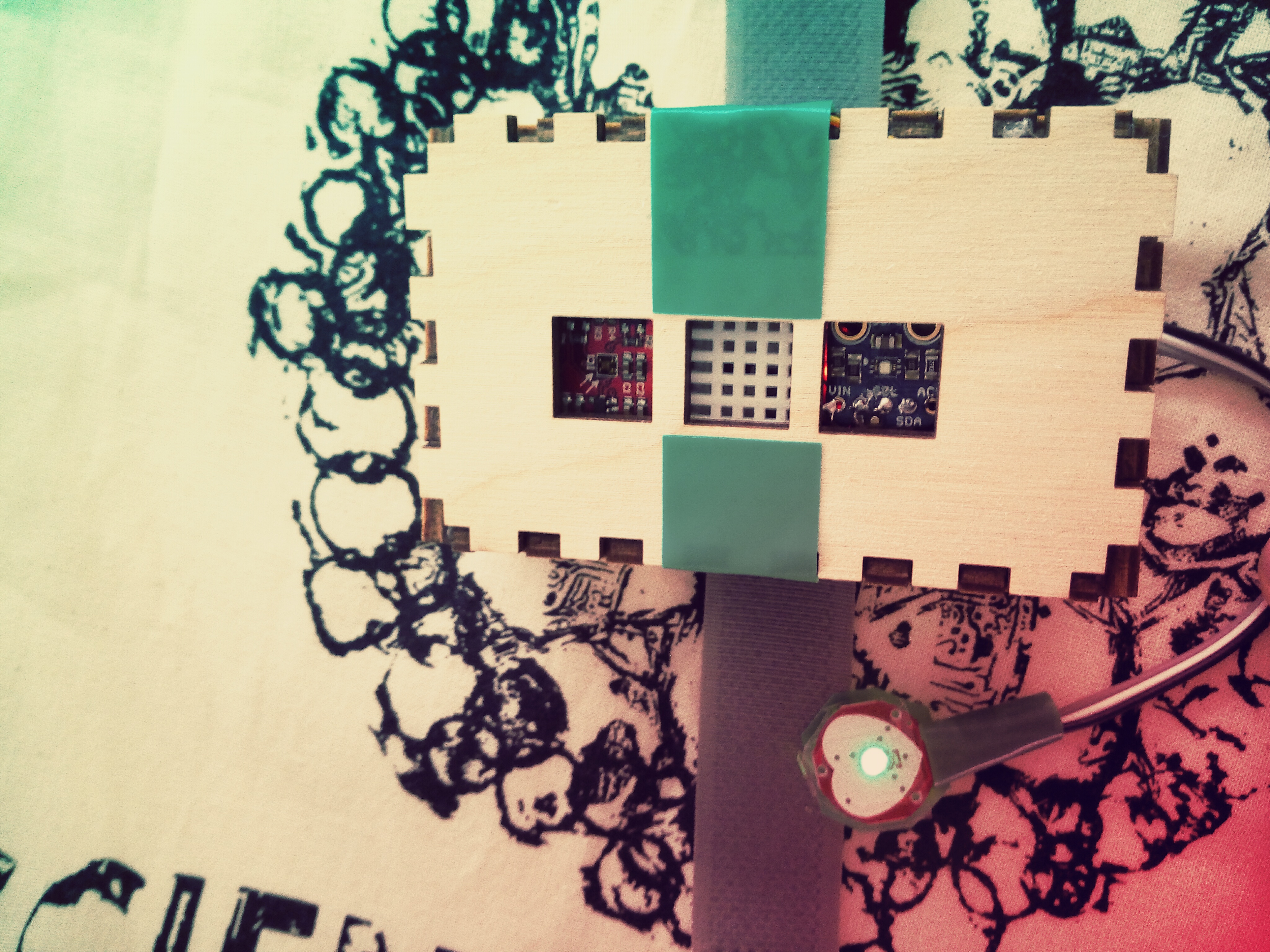
12. SHD Emission Tracker
LINKS:
https://github.com/ScienceHackDayBerlin/SHD-impact-tooling
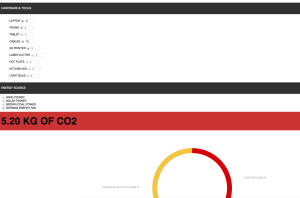
13. Les Joies de la Photographie – fascinating exploration on cyanotypes & lenses (Kati, hacking with lenses)BEST ART/SCIENCE HACK
Team: Rachel, Kati, Rick and an honorary mention to Denny from the nail club for future ladies.
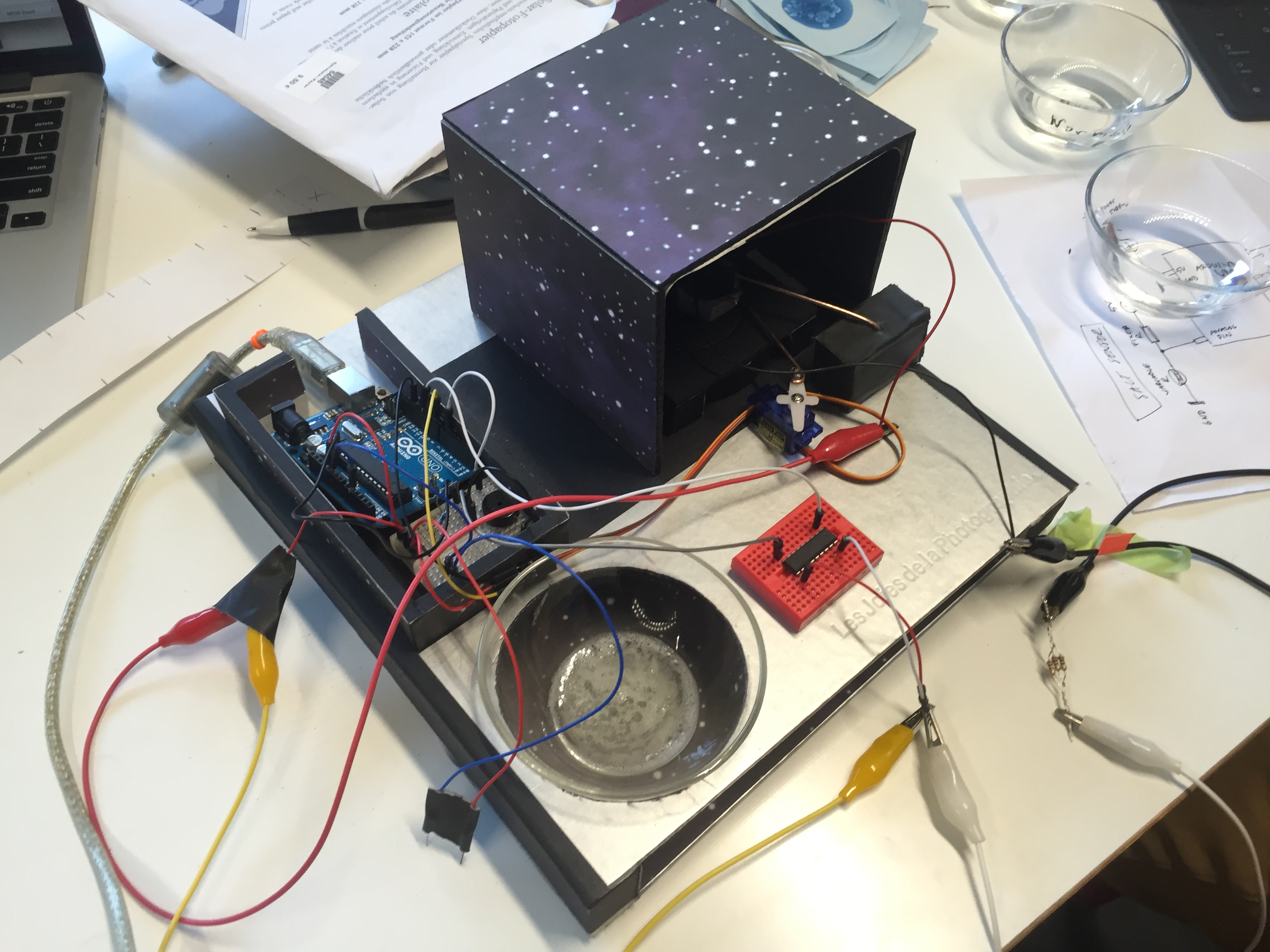
14. underwater robot
Team: Marianne
DESCRIPTION: not waterproof yet…
LINKS
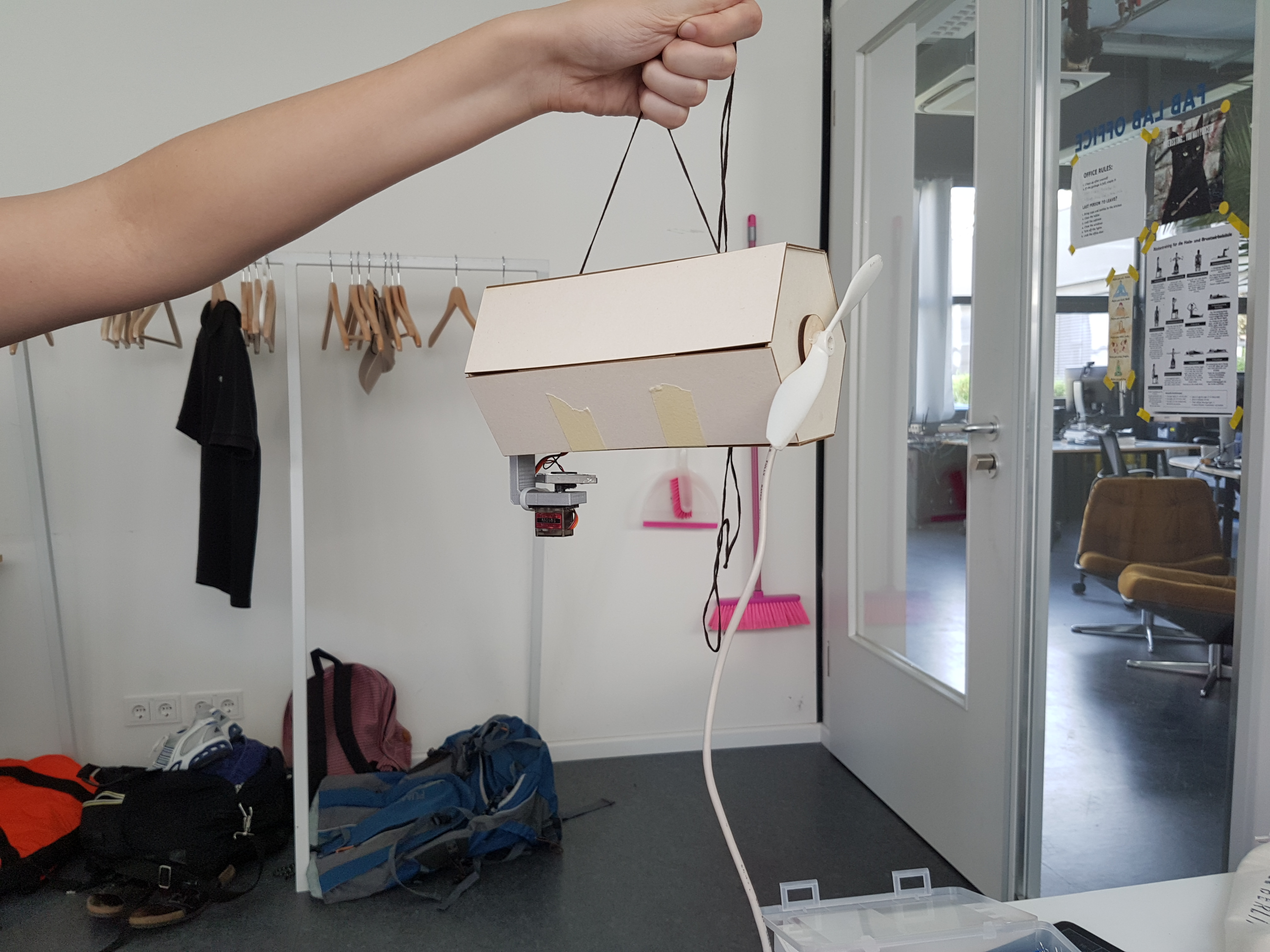
15. glowing women
Team: Florence, Julian, Peggy
Evaluation and fighting against the menstrual taboo in order to promote: women’s health awareness, women empowerment, biomedical research and acquisition of data related to womens’ health.
Gitter:
Google Spreadsheet receiving survey data
https://drive.google.com/open?id=0B7uzKWyiVOFJODNfQlBLbnFJeVU


